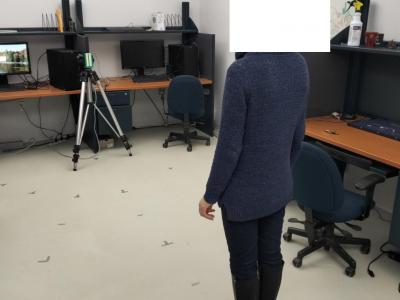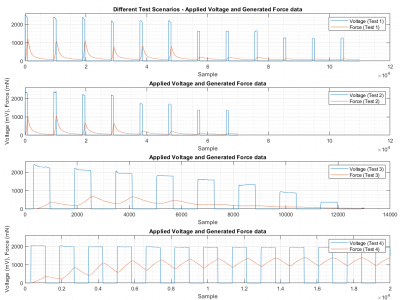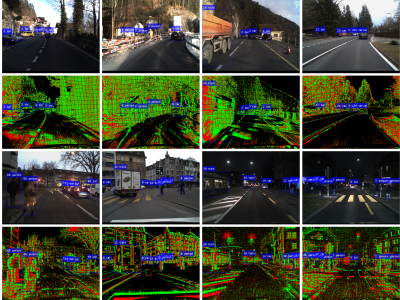Machine Learning
This dataset contains raw FMCW radar signals collected for human localization and activity monitoring in indoor environments. The data was recorded using mmWave radar sensors across two different laboratory settings, designed to simulate real-life scenarios for human detection and localization tasks.
- Categories:
 79 Views
79 ViewsThis dataset contains raw FMCW radar signals collected for human localization and activity monitoring in indoor environments. The data was recorded using mmWave radar sensors across two different laboratory settings, designed to simulate real-life scenarios for human detection and localization tasks.
- Categories:
 88 Views
88 Views
The ORL and WarpPIE datasets consist of grayscale face images, with each sample representing a single individual captured under various lighting conditions, facial expressions, and occlusions. The COIL20 dataset contains grayscale images of 20 distinct objects, with each object represented by 72 images taken from different rotational perspectives. The MNIST and USPS datasets comprise handwritten digits ranging from 0 to 9.
- Categories:
 8 Views
8 Views
This dataset aims to support research on temporal segmentation of the Timed Up and Go (TUG) test using a first-person wearable camera. The data collection includes a training set of 8 participants and a test set of 60 participants. Among the 8 participants, the test was completed at both a normal walking pace and a simulated slower walking pace to mimic elderly movement patterns. The 60 participants were randomly divided into two groups: one group completed the test at a normal walking pace, and the other group simulated slower walking speed to mimic elderly movement patterns.
- Categories:
 48 Views
48 Views
Abstract: This dataset is sourced from anonymous health check-up records from a hospital, containing a variety of health indicators from different participants. The dataset includes basic information about the participants (such as gender, age, etc.) as well as a series of health metrics, such as blood pressure, weight, and diabetes-related indicators (e.g., urea nitrogen, blood glucose, insulin levels), along with diagnostic recommendations for each participant.
- Categories:
 58 Views
58 Views
This study presents a deep learning-based framework for detecting vehicle deceleration patterns using Ultra-Wideband (UWB) Channel Impulse Response (CIR) analysis. Unlike traditional GPS or IMU-based systems, which struggle in GPS-denied environments such as tunnels, the proposed method leverages UWB CIR signal variations to classify two key driving behaviors: rapid deceleration and gradual deceleration. All data were collected from real-world experiments using UWB devices installed on actual vehicles at a professional highway testing site.
- Categories:
 15 Views
15 ViewsThe graph shows the force and voltage data obtained with the SMA Actuator System in four different scenarios. These scenarios were designed to capture the dynamic behavior according to the difference between the cooling times. The first two scenarios with long cooling times were used to examine the steady-state behavior, and the last two scenarios with short cooling times were used to examine the dynamic responses.
- Categories:
 37 Views
37 Views
This dataset provides packet traces captured in a realistic 5G Vehicle-to-Everything (5G-V2X) environment, encompassing both legitimate vehicular communications and Distributed Denial of Service (DDoS) attacks. By deploying four user equipments (UEs) under multiple attacker configurations, the collected captures reflect various DDoS types (TCP SYN, UDP, and mixed) and reveal their impact on 5G-V2X networks. The dataset is further enriched with Argus files and CSV feature tables, facilitating data-driven approaches such as Machine Learning (ML)-based detection agents.
- Categories:
 357 Views
357 ViewsAbstract
PassengerEEG is a brain-signal dataset designed to study how human passengers perceive and cognitively respond to potential traffic hazards in highly automated vehicles (AVs). As AVs increasingly replace human drivers, understanding passenger cognition becomes essential for improving vehicle safety and adaptive decision-making.
- Categories:
 78 Views
78 ViewsIntroduction
Welcome to the new challenging event-based multi-object tracking dataset (DSEC-MOT) repository. Our goal is to provide a challenging and diverse event-based MOT dataset with various real-world scenarios to facilitate the objective and comphrehensive evaluation of event-based multi-object tracking algorithms. This dataset, built upon DSEC, contains a variety of traffic entities and complex scenarios, aiming to address the current lack of event-based MOT datasets.
- Categories:
 65 Views
65 Views



